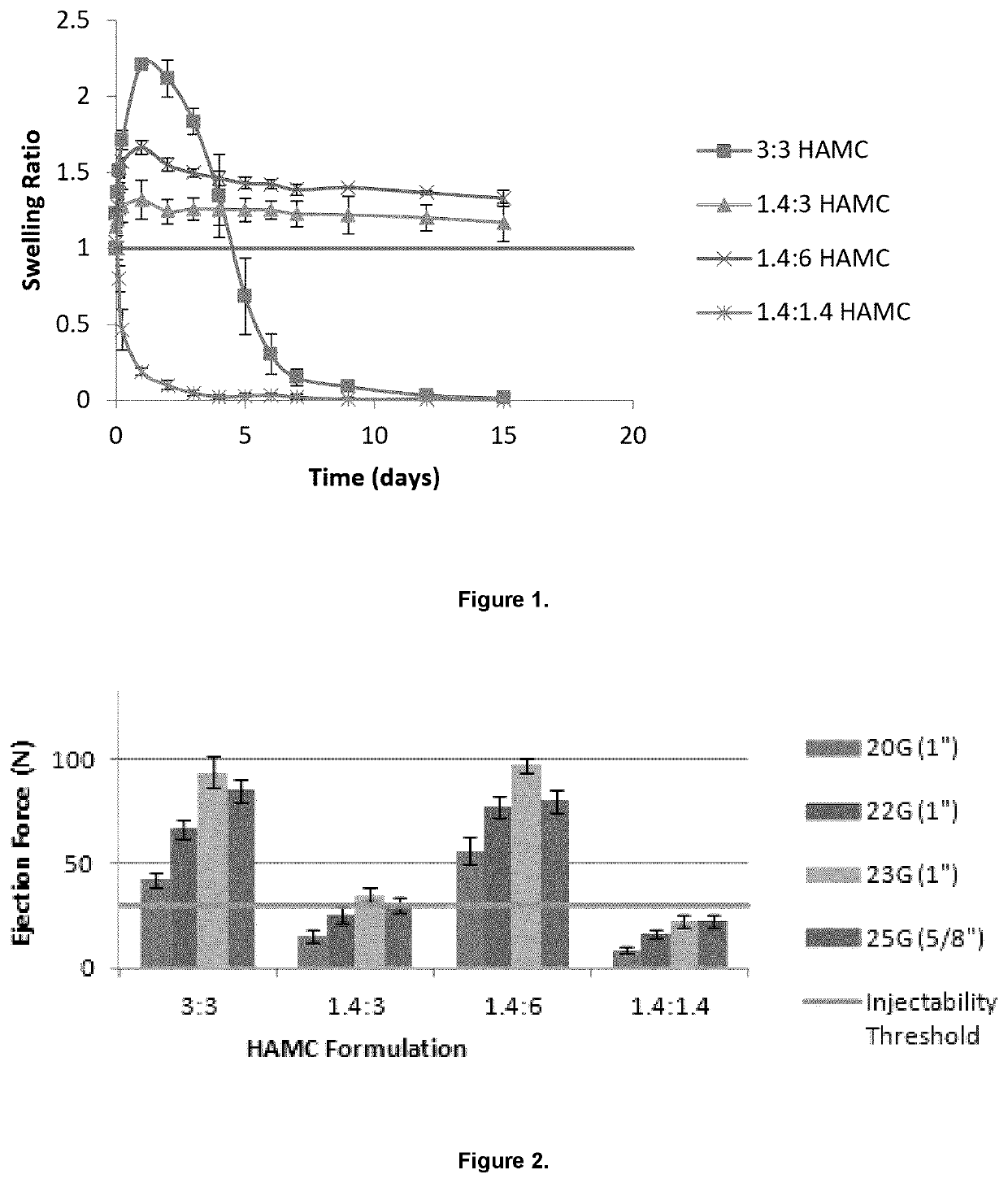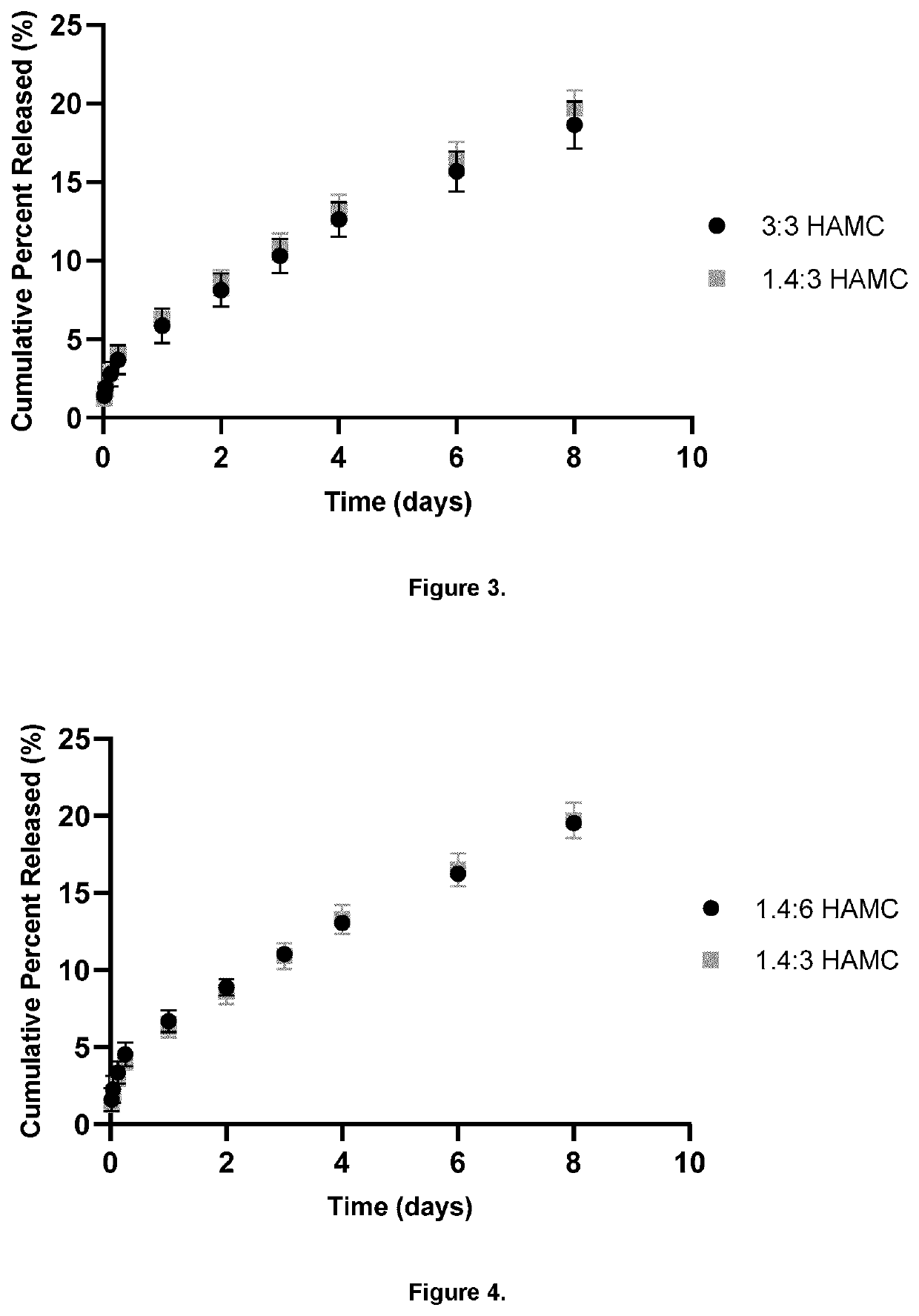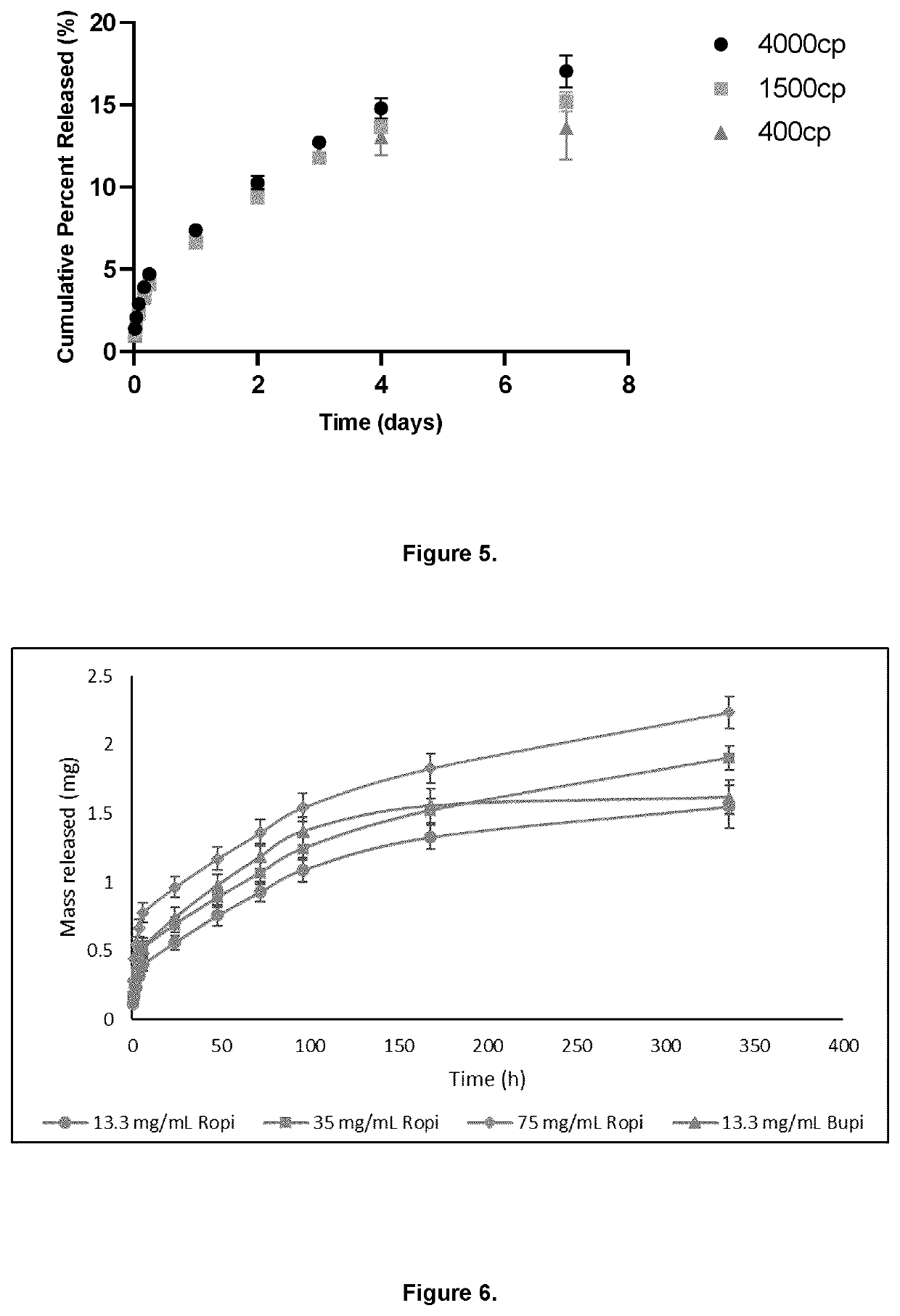Sustained release local anesthetic hydrogel composition
a hydrogel and local anesthetic technology, applied in the direction of drug compositions, heterocyclic compound active ingredients, aerosol delivery, etc., can solve the problems of no effective long-acting local anesthetic and difficult post-surgical pain managemen
- Summary
- Abstract
- Description
- Claims
- Application Information
AI Technical Summary
Benefits of technology
Problems solved by technology
Method used
Image
Examples
example 1
on and Sterilization of HAMC Gels
Preparation of HAMC Gel
[0088]1.4:3 w / w HAMC with 13.3 mg / mL Ropivacaine (Base form) was prepared as per Table 1 (per mL of gel made).
TABLE 114mgSodium Hyaluronate30mgMethylcellulose13.3mgRopivacaine (Base form)942.7μLPhosphate Buffered Saline
[0089]HAMC hydrogels were prepared through the physical blending of HA and MC in phosphate buffered saline (PBS), (speed-mixed at maximum speed for 30 seconds, centrifuged at 5000 RPM for 1 minute) and allowed to dissolve overnight at 4° C. Ropivacaine particles were dispersed in HAMC using a speedmixer to ensure a uniform suspension, (speed-mixed at maximum speed for 30 seconds, centrifuged at 5000 RPM for 1 minute). Gels were kept at 4° C. until sterilization.
Sterilization of HAMC Gels
[0090]HAMC hydrogels were, sequentially, manually mixed with a needle, speed-mixed at maximum speed for 30 seconds, centrifuged at maximum speed for 1 minute and then placed in a glass vial with a loosened cap. The vial containing...
example 2
HAMC Concentration on Swelling and Degradation
[0092]To determine the optimal HAMC composition, the swelling of the analgesic-loaded hydrogel was investigated. To investigate swelling, the HA:MC ratio was varied.
Degradation Study of HAMC
[0093]Samples were prepared by first recording the mass of 2 mL plastic microtubes and 100 mg of HAMC hydrogel was aliquoted into each microtube. The samples were speed-mixed at maximum speed for 30 seconds in a horizontal position, followed by 30 seconds in a vertical position. The samples were sequentially centrifuged at maximum speed for 30 seconds and then centrifuged in a flat-bottom centrifuge at maximum speed for 10 seconds before being incubated for 30 minutes at 37° C.
[0094]Degradation of the HAMC hydrogels was observed by adding 1 mL of warm (37° C.) PBS to the sample tube and immediately removing the PBS. The surface of the hydrogel was gently dried with a rolled Kim Wipe and the mass of the gel was recorded. 1.8 mL of warm PBS was then add...
example 3
HAMC Concentration on Syringeability / Injectability
[0097]To investigate the injectability of the analgesic-loaded hydrogels, each HAMC formulation was loaded into a 10 mL syringe with a 20, 22, 23, or 25 gauge needle attached. Two concentrations of ropivacaine were tested, 39.9 mg / mL and 75 mg / mL. Using a digital force gauge (M5-50 Force Gauge, Mark-10), the minimum amount of force required to inject each formulation was measured and compared to a manual injectability threshold of 30N. Force was slowly applied to the syringe until gel began to emerge from the tip of the needle. The maximum tension peak force that was applied during the injection process was recorded. This force corresponded to the minimum amount of force required to inject the gel. While the 3:3 and 1.4:6 HAMC formulations were above the manual injectability threshold and were thus not injectable through any of the needle sizes, the 1.4:3 HAMC formulation fell below (or was at) this threshold (FIG. 2). While the 1.4:...
PUM
| Property | Measurement | Unit |
|---|---|---|
| viscosity | aaaaa | aaaaa |
| wt % | aaaaa | aaaaa |
| median diameter | aaaaa | aaaaa |
Abstract
Description
Claims
Application Information
 Login to View More
Login to View More - R&D
- Intellectual Property
- Life Sciences
- Materials
- Tech Scout
- Unparalleled Data Quality
- Higher Quality Content
- 60% Fewer Hallucinations
Browse by: Latest US Patents, China's latest patents, Technical Efficacy Thesaurus, Application Domain, Technology Topic, Popular Technical Reports.
© 2025 PatSnap. All rights reserved.Legal|Privacy policy|Modern Slavery Act Transparency Statement|Sitemap|About US| Contact US: help@patsnap.com



